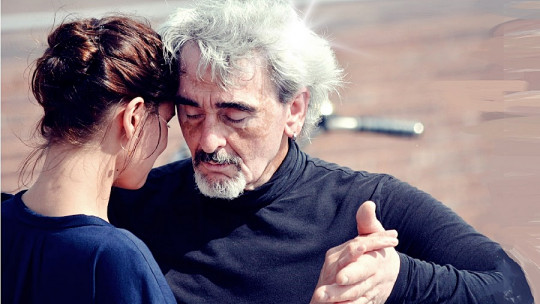With the passing of the decades and the expansion of welfare societies, new ways of loving have appeared. Yeah Before, it was practically an obligation to marry a person of the opposite sex and have children (or dedicate one’s life to a god), today the creation of emotional ties is much freer.
Homosexual marriage, for example, means that regardless of sexual orientation people have the same rights when getting married, while the option of not having a partner is becoming more and more socially accepted (although there is still a certain stigma about women single women of a certain age). Furthermore, in recent years proposals such as polyamory or relational anarchy have begun to question the idea of romantic love and traditional monogamous couples.
However, for some people there is still a long way to go to make freedom in emotional life something truly present in our societies. It is from this type of positions that the concept of agamy, an idea as revolutionary as it is controversial
What is agamy?
Agamy is, fundamentally, the absence of what is called fallow deerwhich is a union between two people that has marriage as a point of reference In courtship, for example, it is an example of fallow deersince culturally it is seen as a prelude to marriage, but there are many other similar cases.
For example, the relationship between two lovers, who are not formally considered a couple, is also fallow deer, in the vast majority of cases. Because? Because they cannot remain indifferent to the possibility that oneself, or the other person, seeks to formalize the relationship, and they accept that possibility as something normal, which should condition their way of behaving towards the other. After all, sex is not something foreign to fallow deerbut rather it is what has given rise to its existence.
Something as simple as feigning disinterest in the other person in specific cases, for example, is usually a way of trying not to give the image of a person in love: courtship and marriage act as background noise against which one must position oneself.
Thus, the defenders of agamy They tend to criticize the idea of polyamory pointing out that, in practice, it is a way of loving with the traditional gamic relationship as a reference point. Ultimately, all kinds of names and labels are established to define each of the forms of polyamory according to the degree to which they resemble the traditional monogamous couple, indicating types of commitments that only make sense if the goings-on have been internalized. based on romantic love.
The relational standard of marriage
From the point of view of the defenders of agamy, our way of seeing love is conditioned by the strong cultural roots of marriage as a way to regulate emotional life. For example, when we refer to the world of emotions, the word “relationship” tells us about a loving bond typically based on romantic love, of which marriage has always been the maximum expression.
To refer to other types of emotional ties, it is necessary to add adjectives, specifications that make it clear that what we are talking about is not exactly a couple in love: friendship relationship, professional relationship, etc. Marriage continues to be the axis of emotional relationships, that which serves as the maximum reference and that is impossible to ignore. At the same time, this type of links based on fallow deer They create norms in other relationships: there is adultery, for example, seen as a violation of norms in a relationship not formalized through marriage, or the poor social acceptance of feeling attracted to someone who is married.
In other words, it is considered that there is only one possible choice: or agamy, which is the rejection of any relational standard in the emotional (because in practice they are all based on the same thing), or the fallow deerin which everything is measured based on the extent to which a bond resembles a courtship or a marriage.
Love, seen from the agamic perspective
In agamy, what we normally consider love is seen as just a concept that has emerged from the expansion of a very specific way of creating emotional ties: romantic love linked to marriage. From this perspective, our perception of affection is neither neutral nor innocent: it is judged based on a relational standard based on marital-type bonds.
Thus, based on the objective existence of marriage-type bonds, a series of social norms, thought patterns and beliefs have appeared that, without realizing it, condition our way of living emotions in all areas of our lives, both in monogamous and polygamous societies.
Marriage, which historically has been a way of perpetuating lineages (until not so long ago, directly trading with women, by the way), was seen as a material necessity to survive, and from this fact ideas and customs appeared to justify this. psychologically practical. As the generations passed, the idea that emotional relationships are either marriage or its substitutes became more and more internalized, so that today it is difficult to abandon the reference to marriage. fallow deer.
A freer affectivity
The concept of agamy attracts attention because it is as simple as it is challenging. On the one hand, to define it, it is enough to say that it is the absence of unions inspired by marriage and courtship, but on the other hand, it is difficult to realize at what times those highly internalized mental schemes based on sex are acting. and the formal link regulated by collectively created rules
Who knows if, as we have access to more comfortable lives and with less need to depend on the family unit, agamy becomes more widespread.









